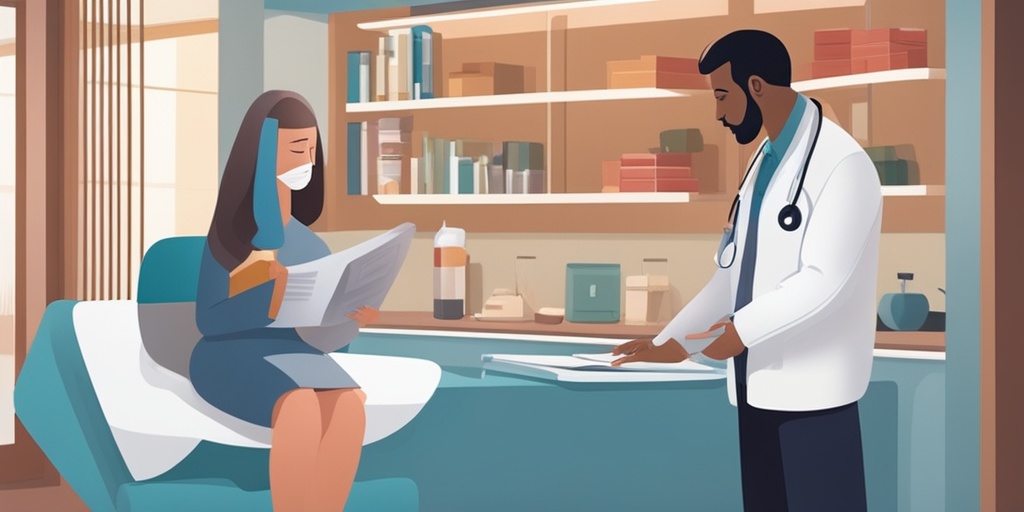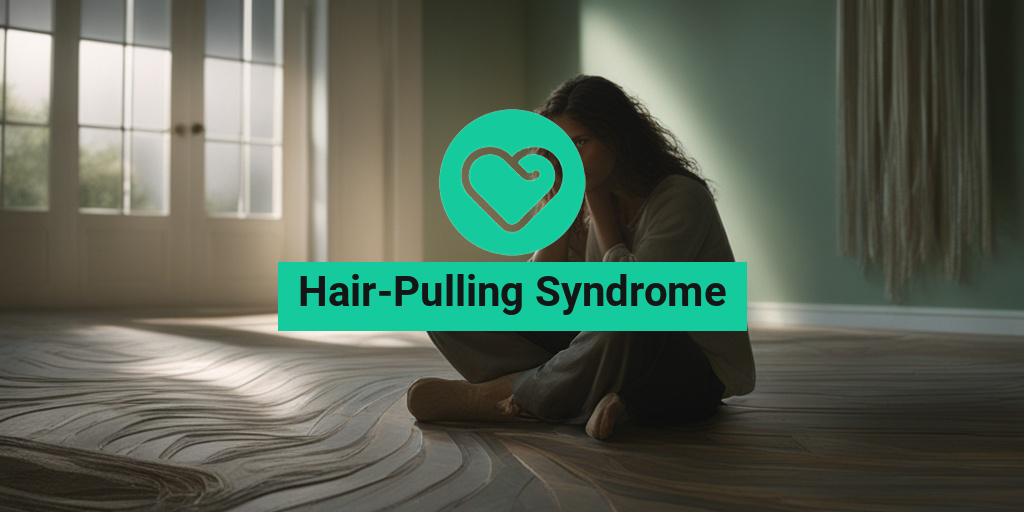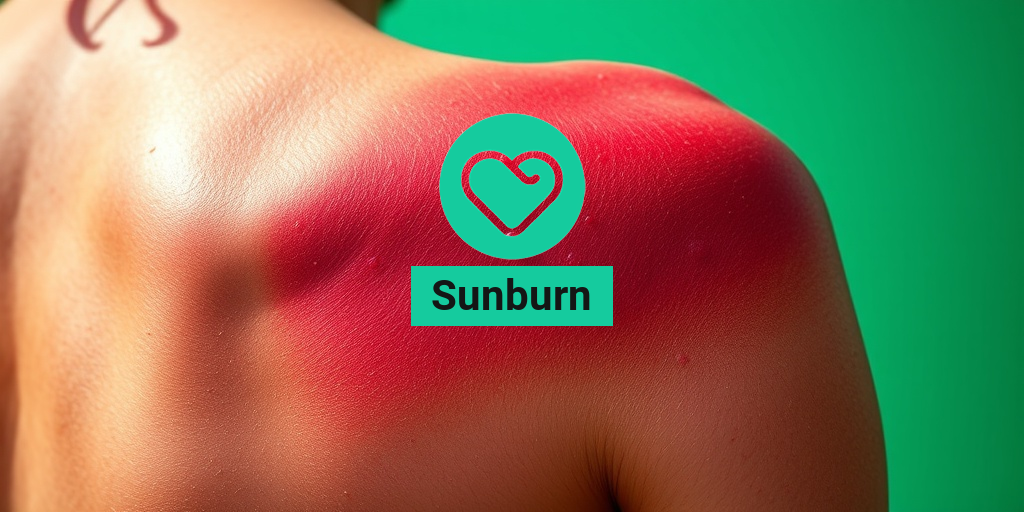“`html
What Is Hair-Pulling Syndrome?
Hair-Pulling Syndrome, clinically known as Trichotillomania, is a mental health condition characterized by the compulsive urge to pull out one’s hair. This behavior can lead to noticeable hair loss and significant distress. While it may seem like a simple habit, it is classified as a body-focused repetitive behavior (BFRB) and is often associated with anxiety and stress.
Trichotillomania is not just about hair pulling; it can also involve other behaviors such as skin picking or nail biting. The condition can affect individuals of all ages, but it often begins in childhood or adolescence. According to the DSM-5 (Diagnostic and Statistical Manual of Mental Disorders, Fifth Edition), Trichotillomania is categorized under obsessive-compulsive and related disorders, highlighting its serious nature.
Understanding the Causes
The exact causes of Hair-Pulling Syndrome remain unclear, but several factors may contribute to its development:
- Genetic Factors: A family history of BFRBs or other mental health disorders may increase the risk.
- Environmental Triggers: Stressful life events, trauma, or changes in routine can trigger hair-pulling episodes.
- Psychological Factors: Many individuals with Trichotillomania report using hair pulling as a coping mechanism for anxiety or emotional distress.
Hair-Pulling Disorder in Toddlers
Interestingly, hair pulling can also manifest in young children. In toddlers, this behavior may be less about the compulsive urge and more about exploration or self-soothing. However, if it persists, it may require intervention. Parents should monitor their child’s behavior and consult a healthcare professional if they notice excessive hair pulling.
Symptoms of Hair-Pulling Syndrome
Recognizing the symptoms of Hair-Pulling Syndrome is crucial for early intervention and treatment. The symptoms can vary widely among individuals, but common signs include:
- Compulsive Hair Pulling: The primary symptom is the repeated pulling out of hair from the scalp, eyebrows, eyelashes, or other areas.
- Hair Loss: Noticeable bald patches or thinning hair can occur as a result of the pulling.
- Emotional Distress: Individuals often experience feelings of shame, guilt, or embarrassment about their behavior.
- Increased Tension: Many report a buildup of tension before pulling hair, followed by a sense of relief or gratification afterward.
- Avoidance of Social Situations: Due to embarrassment about their appearance, individuals may avoid social interactions or situations where their hair loss is noticeable.
Impact on Daily Life
The effects of Hair-Pulling Syndrome can extend beyond physical symptoms. It can significantly impact an individual’s quality of life, leading to:
- Social Isolation: Fear of judgment can lead to withdrawal from friends and family.
- Low Self-Esteem: Persistent hair loss can affect self-image and confidence.
- Co-occurring Disorders: Many individuals with Trichotillomania also experience anxiety, depression, or other mental health issues.
Seeking Help
If you or someone you know is struggling with Hair-Pulling Syndrome, it’s important to seek help. Treatment options may include:
- Cognitive Behavioral Therapy (CBT): This therapy focuses on changing negative thought patterns and behaviors.
- Medication: Some individuals may benefit from medications that target anxiety or compulsive behaviors.
- Support Groups: Connecting with others who understand the struggle can provide emotional support and coping strategies.
For more information and resources on Hair-Pulling Syndrome, consider visiting Yesil Health AI, where you can find evidence-based health answers tailored to your needs.
Understanding Hair-Pulling Syndrome is the first step toward recovery. If you notice symptoms in yourself or a loved one, don’t hesitate to reach out for help. Remember, you are not alone in this journey! 🌟
“`

“`html
Causes of Hair-Pulling Syndrome
Hair-Pulling Syndrome, clinically known as trichotillomania, is a complex condition that leads individuals to compulsively pull out their hair. Understanding the causes of this disorder is crucial for effective treatment and management. While the exact cause remains unclear, several factors contribute to its development.
Genetic Factors
Research suggests that genetics may play a significant role in the onset of hair-pulling syndrome. Individuals with a family history of trichotillomania or other related disorders, such as obsessive-compulsive disorder (OCD), may be more susceptible. Genetic predisposition can influence brain chemistry and emotional regulation, making some individuals more vulnerable to developing compulsive behaviors.
Psychological Factors
Psychological factors are often at the forefront of hair-pulling syndrome. Many individuals report that hair pulling serves as a coping mechanism for dealing with stress, anxiety, or emotional distress. This behavior can provide temporary relief, reinforcing the cycle of pulling. Common psychological triggers include:
- Stress: High-stress situations can lead to increased urges to pull hair.
- Anxiety: Individuals with anxiety disorders may find hair pulling to be a way to manage their feelings.
- Depression: Feelings of sadness or hopelessness can exacerbate the urge to engage in hair-pulling behaviors.
Environmental Factors
Environmental influences can also contribute to the development of hair-pulling syndrome. Traumatic experiences, such as abuse or significant life changes, may trigger the onset of this disorder. Additionally, cultural and social factors can impact how individuals perceive and cope with stress, potentially leading to hair-pulling behaviors.
Neurological Factors
Some studies suggest that hair-pulling syndrome may be linked to neurological factors, particularly in how the brain processes rewards and impulses. Dysregulation in certain brain circuits can lead to compulsive behaviors, including hair pulling. This connection highlights the importance of understanding the brain’s role in managing impulses and emotions.
Risk Factors for Hair-Pulling Syndrome
Identifying the risk factors associated with hair-pulling syndrome can help in early detection and intervention. While anyone can develop this disorder, certain characteristics and circumstances may increase the likelihood of its onset.
Age and Gender
Hair-pulling syndrome often begins in childhood or adolescence, with many individuals reporting symptoms before the age of 17. Interestingly, studies indicate that females are more likely to be affected than males, although the reasons for this gender disparity are still being explored.
Co-occurring Disorders
Individuals with hair-pulling syndrome frequently experience co-occurring mental health disorders. Conditions such as OCD, anxiety disorders, and depression are commonly reported among those with trichotillomania. The presence of these disorders can complicate treatment and increase the severity of hair-pulling behaviors.
Personality Traits
Certain personality traits may also serve as risk factors for developing hair-pulling syndrome. Individuals who are perfectionists or have high levels of self-criticism may be more prone to engage in compulsive behaviors as a way to cope with their feelings of inadequacy. Additionally, those with low self-esteem may find themselves more susceptible to hair pulling as a means of self-soothing.
Family History
A family history of hair-pulling syndrome or related disorders can significantly increase an individual’s risk. If a close relative has experienced trichotillomania or other compulsive behaviors, the likelihood of developing similar issues may rise. This connection underscores the importance of understanding both genetic and environmental influences on mental health.
In summary, the causes and risk factors of hair-pulling syndrome are multifaceted, involving a combination of genetic, psychological, environmental, and neurological elements. Recognizing these factors can aid in the development of effective treatment strategies and support for those affected by this challenging disorder. 🌱
“`

“`html
Diagnosis of Hair-Pulling Syndrome
Hair-Pulling Syndrome, clinically known as Trichotillomania, is a mental health condition characterized by the compulsive urge to pull out one’s hair, leading to noticeable hair loss. Diagnosing this disorder can be complex, as it often overlaps with other mental health issues such as OCD (Obsessive-Compulsive Disorder) and anxiety disorders. Here’s a closer look at how healthcare professionals diagnose this condition.
Understanding the Symptoms
The first step in diagnosing Hair-Pulling Syndrome is recognizing the symptoms. Common signs include:
- Recurrent hair pulling: This can occur from the scalp, eyebrows, eyelashes, or other body areas.
- Noticeable hair loss: This may lead to bald patches or thinning hair.
- Attempts to stop: Individuals often find it difficult to control or stop the behavior despite wanting to.
- Emotional distress: Hair pulling may be triggered by stress, anxiety, or boredom, leading to significant emotional distress.
Clinical Assessment
To diagnose Hair-Pulling Syndrome, a mental health professional will typically conduct a thorough assessment, which may include:
- Clinical interviews: Discussing the individual’s history, symptoms, and any co-occurring mental health conditions.
- Behavioral assessments: Evaluating the frequency and context of hair-pulling behaviors.
- Diagnostic criteria: Utilizing the DSM-5 (Diagnostic and Statistical Manual of Mental Disorders, Fifth Edition) criteria to confirm the diagnosis.
According to the DSM-5, the diagnosis of Trichotillomania requires that the hair pulling causes significant distress or impairment in social, occupational, or other important areas of functioning. This thorough evaluation helps ensure that the individual receives the appropriate diagnosis and treatment.
Treatment Options for Hair-Pulling Syndrome
Once diagnosed, individuals with Hair-Pulling Syndrome can explore various treatment options tailored to their specific needs. The goal of treatment is to reduce hair-pulling behaviors and address any underlying emotional issues. Here are some effective treatment strategies:
Cognitive Behavioral Therapy (CBT)
Cognitive Behavioral Therapy is one of the most effective treatments for Trichotillomania. This therapy focuses on identifying and changing negative thought patterns and behaviors associated with hair pulling. Techniques used in CBT may include:
- Habit reversal training: Teaching individuals to recognize the urge to pull hair and replace it with a competing response.
- Mindfulness techniques: Helping individuals become more aware of their triggers and emotional states.
Medications
While there is no specific medication approved for Hair-Pulling Syndrome, some medications may help manage symptoms. These can include:
- Selective serotonin reuptake inhibitors (SSRIs): Often used to treat anxiety and depression, they may help reduce hair-pulling urges.
- Clomipramine: A tricyclic antidepressant that has shown some effectiveness in treating Trichotillomania.
Support Groups and Therapy
Joining a support group can provide individuals with a sense of community and understanding. Sharing experiences with others facing similar challenges can be incredibly therapeutic. Additionally, individual therapy can help address any co-occurring mental health issues, such as anxiety or depression, which may exacerbate hair-pulling behaviors.
Self-Help Strategies
In addition to professional treatment, individuals can adopt self-help strategies to manage their symptoms. These may include:
- Keeping hands busy: Engaging in activities that occupy the hands, such as knitting or stress balls.
- Journaling: Writing about triggers and emotions can help individuals understand their urges better.
- Setting goals: Establishing small, achievable goals related to reducing hair-pulling can foster a sense of accomplishment.
Hair-Pulling Syndrome can be a challenging condition to navigate, but with the right diagnosis and treatment options, individuals can find relief and regain control over their lives. 🌟
“`

“`html
Home Remedies for Hair-Pulling Syndrome
Hair-Pulling Syndrome, also known as trichotillomania, is a challenging condition that affects many individuals. While professional treatment is often necessary, there are several home remedies that can help manage symptoms and reduce the urge to pull hair. Here are some effective strategies you can try:
1. Mindfulness and Meditation
Practicing mindfulness and meditation can significantly help in managing the compulsive behaviors associated with hair-pulling. These techniques encourage you to focus on the present moment, reducing anxiety and stress that may trigger the urge to pull hair. Consider dedicating a few minutes each day to meditation or deep-breathing exercises. 🧘♀️
2. Keeping Your Hands Busy
One effective way to combat hair-pulling is to keep your hands occupied. Engaging in activities such as knitting, drawing, or even squeezing a stress ball can redirect your focus and reduce the urge to pull. Fidget toys are also a great option to keep your hands busy and distracted.
3. Establishing a Routine
Creating a daily routine can provide structure and predictability, which may help reduce anxiety levels. Incorporate activities that promote relaxation and self-care, such as exercise, reading, or spending time in nature. A consistent routine can help you feel more in control and less likely to engage in hair-pulling behaviors.
4. Journaling
Keeping a journal can be a powerful tool for self-reflection. Write down your feelings, triggers, and the situations that lead to hair-pulling. This practice can help you identify patterns and develop strategies to cope with urges. Additionally, journaling can serve as an emotional outlet, allowing you to express your thoughts and feelings in a safe space. 📓
5. Herbal Remedies
Some individuals find relief through herbal remedies. Herbs like chamomile and lavender are known for their calming properties. You can enjoy them as teas or use essential oils in aromatherapy. However, it’s essential to consult with a healthcare professional before starting any herbal treatment to ensure it’s safe for you.
6. Support Groups
Connecting with others who understand your struggles can be incredibly beneficial. Look for local or online support groups for individuals with hair-pulling syndrome. Sharing experiences and coping strategies can provide comfort and encouragement. Platforms like Reddit have communities where you can find support and advice from others facing similar challenges. 🤝
Living with Hair-Pulling Syndrome
Living with Hair-Pulling Syndrome can be a daily challenge, but understanding the condition and developing coping strategies can make a significant difference. Here are some insights into managing life with this disorder:
Understanding Triggers
Identifying your personal triggers is crucial in managing hair-pulling urges. Triggers can vary widely from person to person and may include stress, boredom, or specific environments. Keeping a trigger diary can help you recognize patterns and prepare for situations that may lead to hair-pulling.
Seeking Professional Help
While home remedies can be helpful, seeking professional help is often necessary for effective management. Therapists specializing in trichotillomania can provide cognitive-behavioral therapy (CBT) and other treatment options tailored to your needs. Don’t hesitate to reach out for support; you don’t have to face this alone. 🩺
Building a Support Network
Having a strong support network can make a world of difference. Share your experiences with trusted friends and family members who can offer understanding and encouragement. Consider joining online forums or local support groups where you can connect with others who share similar experiences.
Self-Care Practices
Incorporating self-care practices into your daily routine can help reduce stress and improve your overall well-being. Activities such as yoga, exercise, and spending time in nature can promote relaxation and help you manage the emotional aspects of hair-pulling syndrome. 🌿
Educating Yourself and Others
Understanding Hair-Pulling Syndrome is essential for both you and those around you. Educate yourself about the condition, its causes, and potential treatments. Sharing this knowledge with friends and family can foster empathy and support, making it easier for them to understand your experiences.
Living with Hair-Pulling Syndrome can be challenging, but with the right strategies and support, you can manage your symptoms and lead a fulfilling life. Remember, you are not alone in this journey, and there are resources available to help you navigate the complexities of this condition.
“`

“`html
Frequently Asked Questions about Hair-Pulling Syndrome
What is Hair-Pulling Syndrome?
Hair-Pulling Syndrome, also known as trichotillomania, is a mental health condition characterized by the compulsive urge to pull out one’s hair. This behavior can lead to noticeable hair loss and significant distress.
What causes Hair-Pulling Disorder?
The exact causes of hair pulling disorder are not fully understood, but it is believed to be linked to a combination of genetic, environmental, and psychological factors. Stress, anxiety, and certain triggers may exacerbate the condition.
How is Hair-Pulling Disorder diagnosed?
Diagnosis of hair pulling disorder typically involves a thorough evaluation by a mental health professional. The DSM-5 criteria for trichotillomania include recurrent hair pulling resulting in hair loss, an increasing sense of tension before pulling, and relief after pulling.
What are the treatment options for Hair-Pulling Disorder?
Treatment for hair pulling syndrome may include:
- Cognitive-behavioral therapy (CBT)
- Medications such as selective serotonin reuptake inhibitors (SSRIs)
- Support groups and therapy
- Mindfulness and relaxation techniques
Can Hair-Pulling Disorder occur in toddlers?
Yes, hair pulling disorder can occur in toddlers, although it is less common. Early intervention and support are crucial for managing the condition in young children.
Is Hair-Pulling Disorder related to OCD?
While hair pulling disorder shares some similarities with obsessive-compulsive disorder (OCD), it is classified as a separate condition. However, individuals with OCD may also experience hair pulling as a compulsive behavior.
How can I support someone with Hair-Pulling Syndrome?
Supporting someone with hair pulling syndrome involves understanding their condition, encouraging them to seek professional help, and being patient and empathetic. Open communication can also help them feel less isolated.
Where can I find more information about Hair-Pulling Disorder?
For more information, consider visiting reputable mental health websites, joining support groups, or consulting with a mental health professional who specializes in hair pulling disorder.
“`




